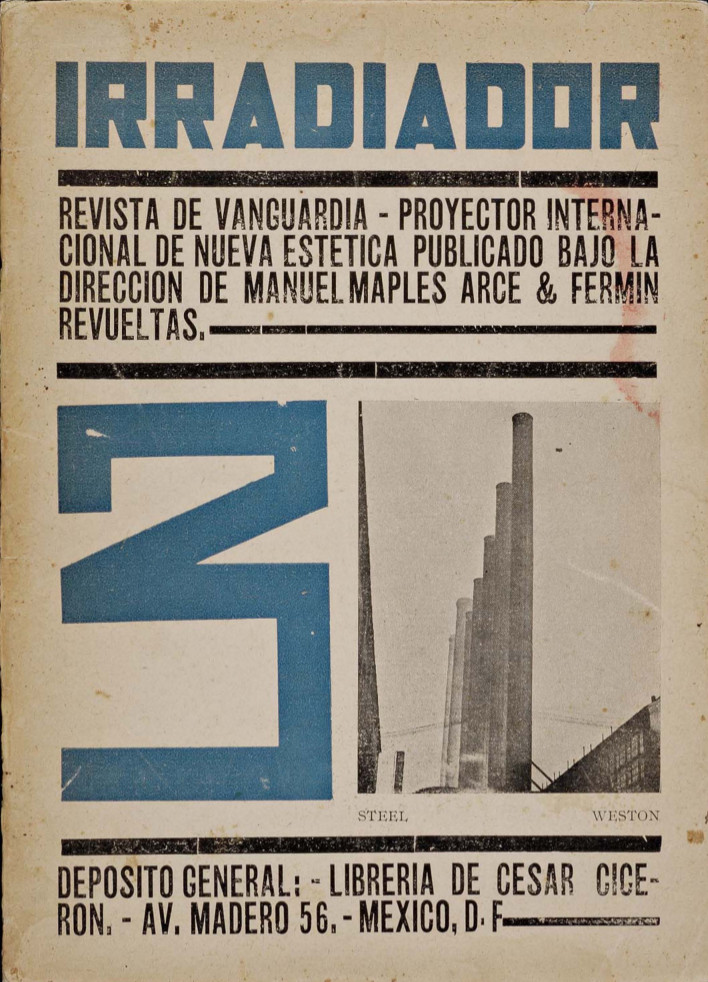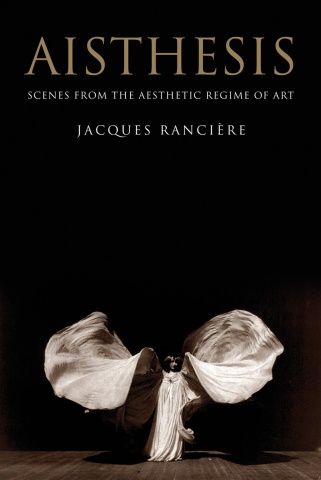Irradiador: revista de vanguardia, 1–3 (1923) [Spanish]
Filed under magazine | Tags: · art, avant-garde, concrete poetry, estridentismo, literature, mexico, poetry, politics


“The Irradiador journal was edited by the artist Fermín Revueltas (1902-1935) and was the major early voice for the Mexican avant-garde movement called Estridentismo. The journal was short-lived, and only saw three issues: September, October, and November of 1923. Still, it saw contributions by major players in the international avant-gardes, all the while staying carefully attuned to Estridentismo‘s present social concerns for post-revolutionary Mexico.
The journal’s foremost concern was the propagation of the new aesthetics in Mexico, and furthering the cultural project of the Mexican revolution. Irradiador, it promised in its motto, ‘Will make reactionaries lose sleep, and will affirm all the anxieties of the present hour.’
The journal featured woodcuts, sculptures, paintings, poems, and articles on subjects as diverse as archaeology and the petroleum industry. Its first issue contains a calligram by none other than the muralist Diego Rivera–an important endorsement for a nascent avant-garde movement like Estridentismo. It also contained a poem by the Argentine Jorge Luis Borges, which bolsters the international credibility of the Mexican movement.
Other important poets, writers, and artists to be featured over the three issues: Salvador Gallardo, Germán List Arzubide, Kyn Tanya, Juan José Tablada, and the U.S. photographer Edward Weston, whom the magazine inexplicably calls ‘Dwad Weston’ (Irradiador 3, inside cover).
The magazine’s aesthetic is a combination of Mexican images–such as Charlot’s woodcuts of indigenous workers–and modern technology, promoting the ‘Jazz Band, petroleum, New York. The city all polarized crackling in the radiotelephonic antennas…’ (‘Inaugural Irradiation’, 1).” (sourced from Kelly Scott Franklin’s blog)
Scans via The Jean Charlot Collection & the University of Hawaii at Manoa
Commentary by Evorio Escalante (video, 3 min, in Spanish)
Comment (0)Thomas Ort: Art and Life in Modernist Prague: Karel Čapek and his Generation, 1911-1938 (2013)
Filed under book | Tags: · 1910s, 1920s, 1930s, art, art history, austria-hungary, avant-garde, cubism, czechoslovakia, history of literature, literature, philosophy, poetry

“In most histories of Europe before the First World War, modern life in Habsburg Mitteleuropa takes on a decidedly gloomy cast. Centering on Vienna in the twilight years of the Austro-Hungarian Empire, such accounts describe the failure of rationalism and the rise of a dangerous politics of fantasy. This book tells a different story, highlighting a generation of Czech writers and artists distinguished by their affirmative encounter with the modern world in the first decades of the twentieth century. Novelist and playwright Karel Čapek, along with other members of his cohort, embraced the possibilities of the post-Habsburg era. Tracing the roots of Čapek’s generation to cubist art and turn-of-the-century philosophy, author Thomas Ort shows that the form of modernism they championed led not into the thickets of fascism or communism but in fact closer to liberal political ideals.”
Publisher Palgrave Macmillan, 2013
Palgrave Studies in Cultural and Intellectual History series
ISBN 1137188863, 9781137188861
276 pages
Jacques Rancière: Aisthesis: Scenes from the Aesthetic Regime of Art (2011/2013)
Filed under book | Tags: · aesthetics, art, art history, art theory, body, cinema, dance, film, life, literature, music, painting, pantomime, philosophy, photography, poetry, politics, representation, sculpture, theatre, theory

Rancière’s magnum opus on the aesthetic.
“Composed in a series of scenes, Aisthesis–Rancière’s definitive statement on the aesthetic–takes its reader from Dresden in 1764 to New York in 1941. Along the way, we view the Belvedere Torso with Winckelmann, accompany Hegel to the museum and Mallarmé to the Folies-Bergère, attend a lecture by Emerson, visit exhibitions in Paris and New York, factories in Berlin, and film sets in Moscow and Hollywood. Rancière uses these sites and events—some famous, others forgotten—to ask what becomes art and what comes of it. He shows how a regime of artistic perception and interpretation was constituted and transformed by erasing the specificities of the different arts, as well as the borders that separated them from ordinary experience. This incisive study provides a history of artistic modernity far removed from the conventional postures of modernism.”
First published as Aisthesis : Scènes du régime esthétique de l’art, Éditions Galilée, 2011
Translated by Zakir Paul
Publisher Verso Books, 2013
ISBN 1781680892, 9781781680896
304 pages
via falsedeity
Reviews: Hal Foster (London Review of Books), Joseph Tanke (Los Angeles Review of Books), Marc Farrant (The New Inquiry), Ali Alizadeh (Sydney Review of Books), Jean-Philippe Deranty (Parrhesia).
Roundtable discussion with Rancière at Columbia (video, 43 min)
Selected interviews and reviews (in French)

